Whether you view ITAR as a necessary and justifiable control helping to safeguard US national security or as a roadblock to reaching the global market, any US photonics company that wants to trade ITAR-controlled products abroad must abide by its rules.
The export and import of all defense articles and services listed on the United States Munitions List (USML) – which can come in many forms, including products, information, manufacturing knowledge, assistance, processes, procedures and performance data – are controlled by ITAR (the International Traffic in Arms Regulations), administered by the US State Department’s Directorate of Defense Trade Controls (DDTC).
Not only US parties must comply; foreign parties also have to follow the necessary rules when dealing with defense articles and services from the US. The ITAR gives the US government control over what and how technology and services may be used by foreign parties.
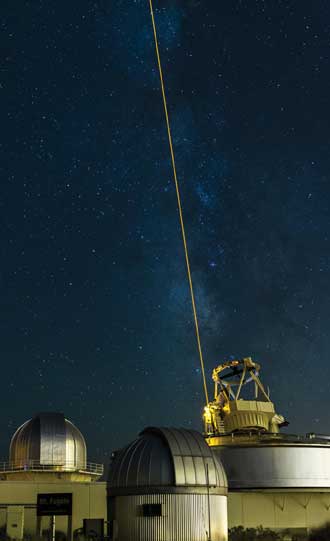
A sodium guide star laser, built by The Boeing Co. and the Air Force Research Laboratory for a telescope at Kirtland Air Force Base in New Mexico, uses adaptive optics technology to help scientists more accurately track objects in Earth orbit. This technology is subject to ITAR.
But ITAR is only half the story. There is also the much larger set of regulations titled the Export Administration Regulations (EAR), administered by the US Commerce Department’s Bureau of Industry and Security. The EAR controls items on the Commerce Control List (CCL), exported from the US for reasons of national security, foreign policy and short supply. While the ITAR controls export of military items, the EAR controls export of dual-use items, which have both military and civilian applications.
Defense manufacturers occasionally quip that the goal of the Department of Commerce is to help Americans export US goods and services, but the goal of the State Department is to stop them. This perception is highlighted in the book United States Export Controls, the sixth edition of which was released by Aspen Publishers in 2012.1
“Simply put, the ITAR is a regulation that manufacturers and exporters of controlled articles and data must comply with, whether or not they agree with its purpose or overall aims,” said the book’s co-author, James E. Bartlett III. He is senior counsel for export/import law at Northrop Grumman Corp., a global aerospace and defense technology company with headquarters in Falls Church, Va.
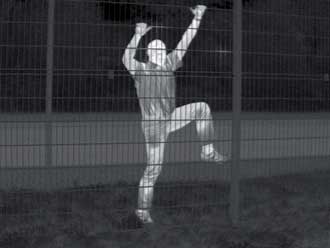
Infrared cameras such as Jenoptik’s VarioCAM can be used not only for
outdoor security and border protection, but also by firefighters and
rescue personnel to see through smoke, fire and darkness.
Most defense and aerospace companies see trade control compliance as an integral part of doing business globally. Items subject to control include some rangefinding technologies; optical, guidance and control equipment; and navigation and telecommunications systems. This means that for many photonics companies, a practicable knowledge of ITAR is essential.
The Boeing Co.’s Network & Space Systems Div. lists the following as its photonics-based products that are subject to ITAR: surveillance detection systems, free-electron lasers, sensor services and space-based sensors, thin-disc lasers, Laser Avenger (Boeing’s infrared combat laser) and the Advanced Tactical Laser (high-power chemical laser).
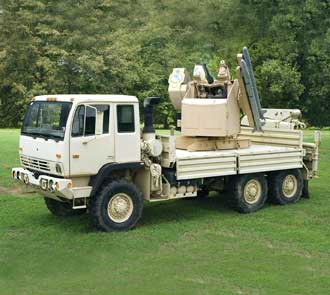
The Boeing Avenger is the US Army’s premier line-of-sight, mobile, short-range air defense system. Avenger is used for tactical defense missions around the world to counter an array of airborne and ground threats.
Getting a true feel of how ITAR affects business is tricky, particularly because companies are understandably reluctant to openly criticize the ITAR and its impact on product development, commercialization and deployment.
ITAR consultancy firms exist to help companies navigate the lengthy and frequently amended set of rules, to ensure they remain on the right side of the law. Sometimes this simply means that the correct forms must be filled in; other times, product features must be amended before they can be exported.
If a major ITAR violation occurs, the consequences can be severe, including fines, jail time and debarment from government contracts. A common example of a minor violation is when a foreign customer returns an ITAR-exported product to the US manufacturer for repair.
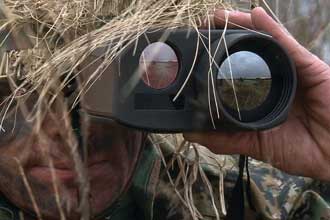
Based on its NYXUS BIRD reconnaissance system, Jenoptik will develop an observation and target-acquisition system for the US Marine Corps.
But Bartlett points out that manufacturers and exporters voluntarily submit hundreds of disclosures of violations to the DDTC every year that result only in warnings to exporters, provided the violations were not intentional and the exporter took quick corrective actions. “A good practice is to disclose to DDTC as soon as a violation is suspected,” Bartlett said. The procedures for reporting violations are explained in Part 127.12 of the ITAR.
“Returning the product itself is not an issue, but not taking the proper ITAR exemptions related to the return for repair causes the ITAR violation,” said Michael K. Doubleday, president and CEO of Excelerate Inc. of Madison, Ala., which offers support to the international defense and aerospace markets. “If the foreign customer simply returns the product to the manufacturer, the ITAR paper trail process is circumvented, creating the violation – albeit rather minor.”
Other common violations include:
• Permitting a foreign person to visit a facility and accidentally witness an ITAR-controlled item being made.
• Knowingly delivering an ITAR-controlled part to another company that goes into a system being delivered to a foreign party without an export license or ITAR exemption.
• Taking an ITAR-controlled product overseas to a trade show without using a DSP-73 license or ITAR exemption for temporary export.
• Assisting a foreign party in integrating a properly exported product overseas without first obtaining a Technical Assistance Agreement (TAA).
• An ITAR-controlled export going to US forces abroad without attaining an export license.
Doubleday is quick to point out that compliance with the ITAR is not overwhelmingly difficult, but is something of which a company engaged in ITAR-controlled activities must be aware and have some level of working knowledge.
For example, a company engaged in the business of manufacturing or exporting ITAR-controlled products and services must be registered with the DDTC per the ITAR, even if the company does not have any plans to export any product or service. The rules for registration can be found in Part 122 of the ITAR.
“Companies need to understand that the ITAR is not a barrier to conducting international business, but a set of rules that help foster safe and effective high-technology business,” Doubleday said. “Companies have a tendency to fight the ITAR rather than just abide by it and conduct their business accordingly. We can’t stress enough how important it is for the senior management of a company to understand and support the ITAR compliance process.”
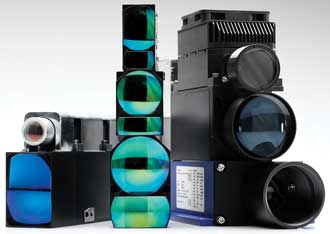
Jenoptik offers various eye-safe laser rangefinders for medium and
long distances. They are used, for example, in optronic reconnaissance
systems; fire control systems; and for distance, position and level
measurement.
But what must surely come as welcome news is the Obama administration’s plan to reform the ITAR process by removing outdated and unnecessary practices as well as combining some regulations, licensing and investigative functions, thereby streamlining the process.
Currently, Boeing and other companies are partnering with the US government as part of the administration’s Export Control Reform Initiative to streamline trade controls governing items that do not require ITAR-level controls.
For example, the ITAR might require that a bolt designed for a US military aircraft needs a license for export. But proposed revisions could remove simple bolts from the ITAR, allowing them to be more easily exported under EAR exemptions.
“We’re pleased with the progress in export reform. These efforts can eventually lead to more focused attention on key technologies that are crucial to safeguarding US security interests, while enabling a more streamlined system for noncritical technologies. In other words, ‘higher walls around fewer items,’ ” said Kathryn Greaney, vice president of global trade controls at Boeing. “We’ve appreciated being able to work with other companies and government leaders who want to create a more efficient, predictable and transparent export control environment.”
There is also an enormous effort under way to combine ITAR’s USML and the EAR’s CCL into a single control regime. The word “enormous” is not an exaggeration, according to Breck Hitz, executive director of LEOMA (the Laser and Electro-Optics Manufacturers’ Association).
“It’s the full-time effort of dozens of officials from Commerce, Defense and Homeland Security,” Hitz said. “Structurally, it’s complicated by the fact that the CCL is a positive list – it lists what is controlled – while USML is mostly a negative list – it lists what is not controlled. The goal is to make the combined list a positive list.”
Reference
1. J.R. Liebman et al (2012). United States Export Controls, Sixth Edition. Wolters Kluwer, ed. Aspen Publishers, Chapter 4, p. 10.
In a nutshell
ITAR explained in one paragraph, an extract from Chapter 4 of United States Export Controls by John R. Liebman, Roszel C. Thomsen II and James E. Bartlett III, and edited by Wolters Kluwer:
The US Arms Export Control Act (AECA), implemented by the ITAR and administered by the State Department’s DDTC, prohibits the export and temporary import of defense articles and technical data, the manufacture abroad of defense articles using US technology, the provision of defense services to foreign persons, and the brokering of defense articles of services by all persons in the US and by US persons wherever located, unless approved in advance by a DDTC-issued export license agreement, or by qualification for an ITAR exemption. Any person
in the US who manufactures or exports defense articles, furnishes defense services to foreign persons, or brokers defense articles or services must register with DDTC and maintain records of regulated activities for five years. Persons who pay certain fees or commissions to secure the sale of defense articles or services must report those payments to DDTC. Violations are punishable by fines, imprisonment, and debarment.
“What we have found, based on years of doing ITAR work, is that the companies that simply understand that they must abide by the ITAR and take the necessary action to remain compliant do very well,” said Michael K. Doubleday, president and CEO of Excelerate Inc. “The ones that want to fight and complain about the regulations typically fail in the global market and blame the regulations for their lack of success.”